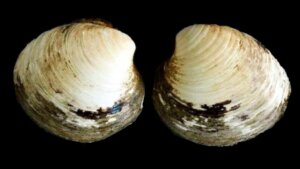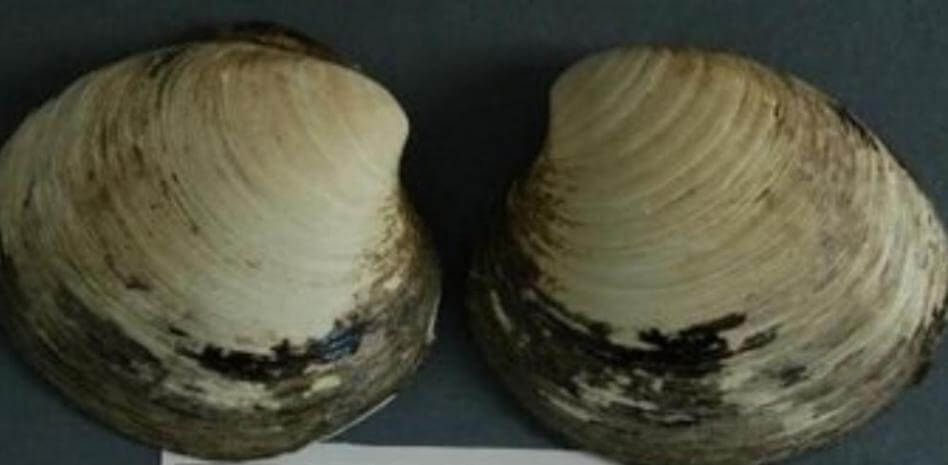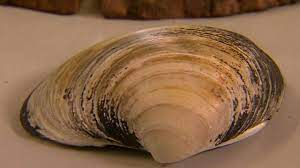Ming Clam, the Longest-Living Animal

In 2006, a scientific expedition in Iceland that was going to carefully study the life of mollusks found a clam with special characteristics. When they observed it in detail, they found that it was a unique specimen. It was christened the Ming clam and turned out to be the longest-living animal.
What was the expedition that found the Ming clam looking for?
Scientists from all over the world often go on expeditions to Iceland and the surrounding area with the intention of studying its mollusks. Very long-lived species have been found in cold waters and this has mobilized the scientific community to try to understand the aging process.
With their rings we know the changes that have occurred in the sea and its climate during the life of this mollusk.
Icelandic clams are studied because they are very long-lived bivalves. They may answer certain unknowns about the aging process. This is because each year they add a new ring to their shell, like trees, and by analyzing these rings we can learn about the history of the oceans.

Why was it named the Ming clam?
When scientists began to study it (officially called an ocean quahog clam) they realized that the clam was hundreds of years old. Initially, it was believed that it was born when the Ming dynasty reigned in China and that’s why it was given that name.
As research progressed it was discovered that it could be more than 500 years old, that is, more than half a millennium.
The death of the Ming clam
As part of a study of the many mollusks collected, the Ming clam was included among them. These investigations consist of taking samples from its shell and, once the shell opens, the animal dies.
The Bangor University research team stated that the peculiarity of the bivalve was still unknown at the beginning of the analysis and when they discovered its importance it was too late to save it.
The Ming clam, the longest-lived animal, died before scientists realized how important it was.
How are clams studied?
The method of study is sclerochronology and consists, in the case of clams, in opening the shell. It isn’t always known if the mollusk is still alive. But, if it is, it will die when it’s opened. With this method, the rings of the shell are counted from the inside.
For all these reasons, the scientists who studied the Ming clam didn’t know that it was still alive and had so many centuries among us.
In their defense, they said that animals of the same species are consumed commercially on a daily basis, and that we may be eating clams that are hundreds of years old for lunch. Their strongest argument was that they only noticed that the clam could be very old when the investigation had already begun.
Ming clam, the longest-lived animal, in the headlines
When the news of the age of the Ming clam broke, its discovery hit the headlines. As did the unfortunate news of its death in research. This situation led to several protests against Bangor University, which was in charge of the research.
Even so, their study led to the publication of a high-quality paper in the scientific journal Age in 2013. In it, the authors described the relationship between the longevity of all the species studied.
The longest-lived animal didn’t use too many resources in response to external stressors, and we can deduce that the Ming clam had a peaceful existence.
There may be more Ming clams in the sea
It’s very likely that the Ming clam isn’t the only clam that boasts longevity. The scientific community is unanimous in its opinion that even older clams may exist in Iceland and the Arctic coasts.
And just as important as the long-lived bivalves is the information they can give us. This is because the oceans have undergone changes in currents, the last one about 400 years ago, in the Little Ice Age.
The shells of oysters, clams, mussels, lobsters, and sea snails, in the long-lived species, reveal to us the history of the oceans and show quickly things have changed recently.
The future of marine research

Today the oceans are affected by CO2 emissions and corals and mollusk shells attest to this. Acidification of marine waters can harm the reproduction of species and the survival of economies that depend on fisheries. High temperatures impacting the ocean are affecting the populations of its marine fauna.
Considering that marine species also contribute unsaturated fatty acids to the human diet, benefiting the cardiovascular system, the importance of supporting scientific research and finding safer methods of study for marine life is understandable.
In 2006, a scientific expedition in Iceland that was going to carefully study the life of mollusks found a clam with special characteristics. When they observed it in detail, they found that it was a unique specimen. It was christened the Ming clam and turned out to be the longest-living animal.
What was the expedition that found the Ming clam looking for?
Scientists from all over the world often go on expeditions to Iceland and the surrounding area with the intention of studying its mollusks. Very long-lived species have been found in cold waters and this has mobilized the scientific community to try to understand the aging process.
With their rings we know the changes that have occurred in the sea and its climate during the life of this mollusk.
Icelandic clams are studied because they are very long-lived bivalves. They may answer certain unknowns about the aging process. This is because each year they add a new ring to their shell, like trees, and by analyzing these rings we can learn about the history of the oceans.

Why was it named the Ming clam?
When scientists began to study it (officially called an ocean quahog clam) they realized that the clam was hundreds of years old. Initially, it was believed that it was born when the Ming dynasty reigned in China and that’s why it was given that name.
As research progressed it was discovered that it could be more than 500 years old, that is, more than half a millennium.
The death of the Ming clam
As part of a study of the many mollusks collected, the Ming clam was included among them. These investigations consist of taking samples from its shell and, once the shell opens, the animal dies.
The Bangor University research team stated that the peculiarity of the bivalve was still unknown at the beginning of the analysis and when they discovered its importance it was too late to save it.
The Ming clam, the longest-lived animal, died before scientists realized how important it was.
How are clams studied?
The method of study is sclerochronology and consists, in the case of clams, in opening the shell. It isn’t always known if the mollusk is still alive. But, if it is, it will die when it’s opened. With this method, the rings of the shell are counted from the inside.
For all these reasons, the scientists who studied the Ming clam didn’t know that it was still alive and had so many centuries among us.
In their defense, they said that animals of the same species are consumed commercially on a daily basis, and that we may be eating clams that are hundreds of years old for lunch. Their strongest argument was that they only noticed that the clam could be very old when the investigation had already begun.
Ming clam, the longest-lived animal, in the headlines
When the news of the age of the Ming clam broke, its discovery hit the headlines. As did the unfortunate news of its death in research. This situation led to several protests against Bangor University, which was in charge of the research.
Even so, their study led to the publication of a high-quality paper in the scientific journal Age in 2013. In it, the authors described the relationship between the longevity of all the species studied.
The longest-lived animal didn’t use too many resources in response to external stressors, and we can deduce that the Ming clam had a peaceful existence.
There may be more Ming clams in the sea
It’s very likely that the Ming clam isn’t the only clam that boasts longevity. The scientific community is unanimous in its opinion that even older clams may exist in Iceland and the Arctic coasts.
And just as important as the long-lived bivalves is the information they can give us. This is because the oceans have undergone changes in currents, the last one about 400 years ago, in the Little Ice Age.
The shells of oysters, clams, mussels, lobsters, and sea snails, in the long-lived species, reveal to us the history of the oceans and show quickly things have changed recently.
The future of marine research

Today the oceans are affected by CO2 emissions and corals and mollusk shells attest to this. Acidification of marine waters can harm the reproduction of species and the survival of economies that depend on fisheries. High temperatures impacting the ocean are affecting the populations of its marine fauna.
Considering that marine species also contribute unsaturated fatty acids to the human diet, benefiting the cardiovascular system, the importance of supporting scientific research and finding safer methods of study for marine life is understandable.
All cited sources were thoroughly reviewed by our team to ensure their quality, reliability, currency, and validity. The bibliography of this article was considered reliable and of academic or scientific accuracy.
- Sepia officinalis, ADW. Recogido a 5 de noviembre en https://animaldiversity.org/accounts/Sepia_officinalis/
- Acidificación: ¿Cómo afecta el CO2 a los océanos? (2021). Oceana Europe. https://europe.oceana.org/es/eu/prensa-e-informes/informes/acidificacion-como-afecta-el-co2-a-los-oceanos
- Heron, S. F. (2017). Impacts of climate change on World Heritage coral reefs : a first global scientific assessment. National Oceanic and Atmospheric Administration. https://repository.library.noaa.gov/view/noaa/16386
This text is provided for informational purposes only and does not replace consultation with a professional. If in doubt, consult your specialist.








